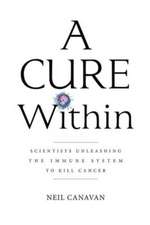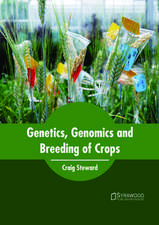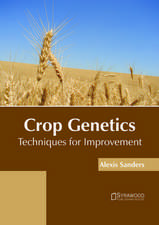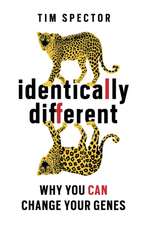Base Excision Repair Pathway: Methods and Protocols: Methods in Molecular Biology, cartea 2701
Editat de Kishor K. Bhakat, Tapas K. Hazraen Limba Engleză Hardback – 14 aug 2023
Authoritative and practical, Base Excision Repair Pathway: Methods and Protocols serves as a valuable resource for novices and experts trying to examine the repair of various types of DNA lesions in vitro and in cell by the distinct set of proteins in the BER pathway.
Din seria Methods in Molecular Biology
- 9%
 Preț: 791.59 lei
Preț: 791.59 lei - 23%
 Preț: 598.56 lei
Preț: 598.56 lei -
 Preț: 496.79 lei
Preț: 496.79 lei - 20%
 Preț: 882.95 lei
Preț: 882.95 lei -
 Preț: 252.04 lei
Preț: 252.04 lei - 5%
 Preț: 724.26 lei
Preț: 724.26 lei - 5%
 Preț: 726.05 lei
Preț: 726.05 lei - 5%
 Preț: 735.86 lei
Preț: 735.86 lei - 5%
 Preț: 741.65 lei
Preț: 741.65 lei - 15%
 Preț: 658.58 lei
Preț: 658.58 lei - 18%
 Preț: 1017.78 lei
Preț: 1017.78 lei - 5%
 Preț: 729.17 lei
Preț: 729.17 lei - 18%
 Preț: 907.46 lei
Preț: 907.46 lei - 15%
 Preț: 659.73 lei
Preț: 659.73 lei - 15%
 Preț: 649.30 lei
Preț: 649.30 lei - 18%
 Preț: 1404.27 lei
Preț: 1404.27 lei - 5%
 Preț: 737.14 lei
Preț: 737.14 lei - 20%
 Preț: 821.63 lei
Preț: 821.63 lei - 18%
 Preț: 965.14 lei
Preț: 965.14 lei - 15%
 Preț: 655.64 lei
Preț: 655.64 lei - 5%
 Preț: 732.98 lei
Preț: 732.98 lei - 18%
 Preț: 977.68 lei
Preț: 977.68 lei - 5%
 Preț: 727.89 lei
Preț: 727.89 lei -
 Preț: 392.58 lei
Preț: 392.58 lei - 5%
 Preț: 740.78 lei
Preț: 740.78 lei - 18%
 Preț: 955.56 lei
Preț: 955.56 lei - 23%
 Preț: 860.21 lei
Preț: 860.21 lei - 15%
 Preț: 647.84 lei
Preț: 647.84 lei - 5%
 Preț: 1047.72 lei
Preț: 1047.72 lei - 23%
 Preț: 883.85 lei
Preț: 883.85 lei -
 Preț: 792.16 lei
Preț: 792.16 lei -
 Preț: 423.62 lei
Preț: 423.62 lei - 5%
 Preț: 425.91 lei
Preț: 425.91 lei -
 Preț: 592.20 lei
Preț: 592.20 lei - 5%
 Preț: 345.62 lei
Preț: 345.62 lei - 19%
 Preț: 491.88 lei
Preț: 491.88 lei - 5%
 Preț: 1038.84 lei
Preț: 1038.84 lei - 5%
 Preț: 524.15 lei
Preț: 524.15 lei - 18%
 Preț: 2106.66 lei
Preț: 2106.66 lei - 5%
 Preț: 1289.64 lei
Preț: 1289.64 lei -
 Preț: 789.93 lei
Preț: 789.93 lei - 5%
 Preț: 1339.10 lei
Preț: 1339.10 lei - 18%
 Preț: 1379.99 lei
Preț: 1379.99 lei - 5%
 Preț: 752.66 lei
Preț: 752.66 lei - 5%
 Preț: 374.89 lei
Preț: 374.89 lei - 18%
 Preț: 1385.33 lei
Preț: 1385.33 lei - 18%
 Preț: 1121.31 lei
Preț: 1121.31 lei - 18%
 Preț: 1397.85 lei
Preț: 1397.85 lei - 18%
 Preț: 1116.60 lei
Preț: 1116.60 lei - 18%
 Preț: 959.15 lei
Preț: 959.15 lei
Preț: 1217.54 lei
Preț vechi: 1484.81 lei
-18% Nou
Puncte Express: 1826
Preț estimativ în valută:
233.18€ • 240.24$ • 195.33£
233.18€ • 240.24$ • 195.33£
Carte tipărită la comandă
Livrare economică 22 februarie-08 martie
Preluare comenzi: 021 569.72.76
Specificații
ISBN-13: 9781071633724
ISBN-10: 1071633724
Ilustrații: XIII, 262 p. 47 illus., 35 illus. in color.
Dimensiuni: 178 x 254 mm
Greutate: 0.7 kg
Ediția:1st ed. 2023
Editura: Springer Us
Colecția Humana
Seria Methods in Molecular Biology
Locul publicării:New York, NY, United States
ISBN-10: 1071633724
Ilustrații: XIII, 262 p. 47 illus., 35 illus. in color.
Dimensiuni: 178 x 254 mm
Greutate: 0.7 kg
Ediția:1st ed. 2023
Editura: Springer Us
Colecția Humana
Seria Methods in Molecular Biology
Locul publicării:New York, NY, United States
Cuprins
Simultaneous Short and Long Patch Base Excision Repair (BER) Assay in Live Mammalian Cells.- In Vitro Assay to Measure APE1 Enzymatic Activity on Ribose Monophosphate Abasic Site.- Highly Sensitive Radioactivity-Based DNA 3’-Phosphatase Activity Assay for Polynucleotide Kinase 3’-Phosphatase.- Generation of Recombinant Nucleosomes Containing Site-Specific DNA Damage.- A DNA Cleavage Assay Using Synthetic Oligonucleotide Containing a Single Site-Directed Lesion for In Vitro Base Excision Repair Study.- In Vitro Reconstitutive Base Excision Repair (BER) Assay.- Detection of Oxidatively Modified Base Lesion(s) in Defined DNA Sequences by FLARE Quantitative PCR.- Isolation and Immunodetection of Enzymatic DNA-Protein Crosslinks by RADAR Assay.- Slot Blot Assay for Detection of R Loops.- Assays with Patient-Derived Organoids to Evaluate the Impact of Microbial Infection on the Base Excision Repair (BER) Enzymes.- Characterizing the Repair of DNA Double-Strand Breaks: A Review of Surrogate Plasmid-Based Reporter Methods.- Interactome Profiling of DNA Damage Response (DDR) Mediators with Immunoprecipitation-Mass Spectrometry.- Using Affinity Pulldown Assays to Study Protein-Protein Interactions of Human NEIL1 Glycosylase and the Checkpoint Protein RAD9-RAD1-HUS1 (9-1-1) Complex.- Tandem Affinity Purification and Mass-Spectrometric Analysis of FACT and Associated Proteins.- Analysis of Copy Number Variation of DNA Repair/Damage Response Genes in Tumor Tissues.- Genome-Wide Binding Analysis of DNA Repair Protein APE1 in Tumor Cells by ChIP-Seq.- Tumorsphere Formation Assay: A Cancer Stem-Like Cell Characterization in Pediatric Brain Cancer Medulloblastoma.
Textul de pe ultima copertă
This detailed volume provides a comprehensive set of experimental protocols and useful strategies to examine the repair of damaged bases via the Base Excision Repair (BER) pathway in vitro and in cells. Beginning with multiple molecular and cellular techniques to examine the excision of damaged bases from double-stranded DNA or DNA wrapped in a nucleosome, the book continues with sections covering procedures to detect and quantify the damaged bases, protein DNA crosslinks, and double-strand breaks, experimental procedures to identify DNA repair protein interactome by conventional tandem affinity purification followed by mass spectroscopy analysis, as well as the analysis of genome-wide binding of DNA repair proteins and copy number variations of the DNA damage response gene in tumors. Written for the highly successful Methods in Molecular Biology series, chapters include introductions to their respective topis, lists of the necessary materials and reagents, step-by-step and readily reproducible laboratory protocols, and tips on troubleshooting and avoiding known pitfalls.
Authoritative and practical, Base Excision Repair Pathway: Methods and Protocols serves as a valuable resource for novices and experts trying to examine the repair of various types of DNA lesions in vitro and in cell by the distinct set of proteins in the BER pathway.
Caracteristici
Includes cutting-edge techniques Provides step-by-step detail essential for reproducible results Contains key implementation advice from the experts
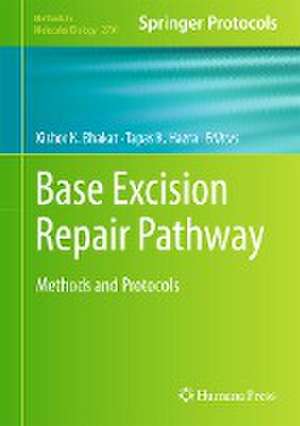


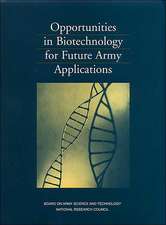

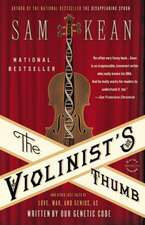
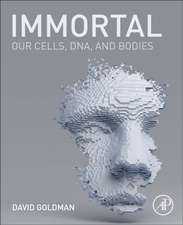
![Landmark Papers in Yeast Biology [With CDROM]: A Guide to Gene Silencing](https://i3.books-express.ro/bt/9780879696436/landmark-papers-in-yeast-biology-with-cdrom.jpg)




